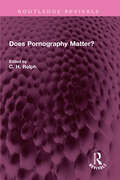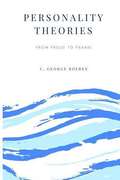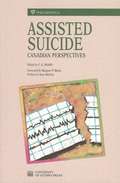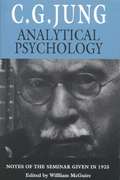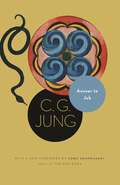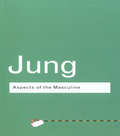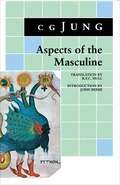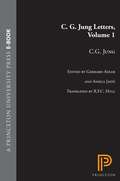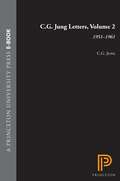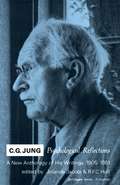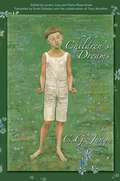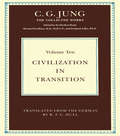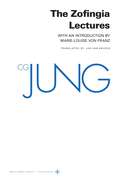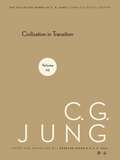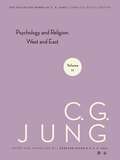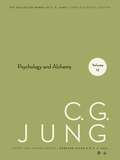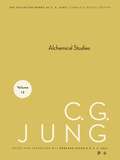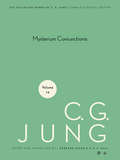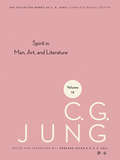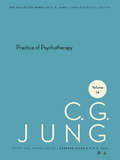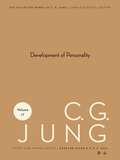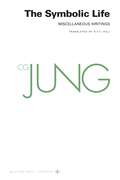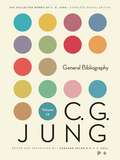- Table View
- List View
Does Pornography Matter? (Routledge Revivals)
by C. H. RolphFirst published in 1961, Does Pornography Matter? consists of chapters written by seven men who were likely to have different points of view, and who would write with authority from the interest they represented. There was no assumption behind the question, and in fact each author has concluded that in one way or another pornography does matter. It was felt, as a start, that to judge whether this or that book was obscene, or a ‘masterpiece’, was not central to the problem. The purpose of the editor was to ask the right question, which is whether pornography matters. The result is a fascinating analysis and some suggestions towards a complete answer. This book will be of interest to students of sociology, religion and psychology.
Personality Theories: From Freud To Frankl
by C. George BoereePersonality psychology is the study of the person. As such, it is arguably the broadest, most "philosophical", branch of psychology. It involves an examination of the effects of genetics, the physical environment, culture, upbringing, trauma, pathology and more. In as much as this is clearly a huge undertaking, it is as much a matter of competing theories as it is of empirical research. For this reason, it remains a tradition in the field to look at various attempts over the last 100-plus years to tackle the issue: "What is it to be a person?" This book attempts to provide an open-minded review of the most important of these theories.
Assisted Suicide: Canadian Perspectives
by C. G. PradoWhen it became possible to extend the dying process, it became necessary to decide when to stop doing so because of the enormous personal and social costs. But perspectives on "assisted suicide" vary greatly. Physicians see it as a medical issue, jurists as a legal issue, philosophers as a moral issue and the media as a political issue. These original essays show how these perspectives shape the ongoing debate.
Coping with Choices to Die
by C. G. PradoThis book examines the reactions of the friends and family of those who elect to die due to terminal illness. These surviving spouses, partners, relatives, and friends, in addition to coping with the death of a loved one, must deal with the loved one's decision to die, thus severing the relationship. C. G. Prado examines how reactions to elective death are affected by cultural influences and beliefs, particularly those related to life, death, and the possibility of an afterlife. Understanding the role of these cultural influences on the grieving processes of survivors is a crucial step in allowing them to accept both intellectually and emotionally the finality of elective death and to deal with the decision of their loved one.
Analytical Psychology: Notes of the Seminar Given in 1925 (Jung Seminars #601)
by C. G. JungFor C. G. Jung, 1925 was a watershed year. He turned fifty, visited the Pueblo Indians of New Mexico and the tribesmen of East Africa, published his first book on the principles of analytical psychology meant for the lay public, and gave the first of his formal seminars in English. The seminar, conducted in weekly meetings during the spring and summer, began with a notably personal account of the development of his thinking from 1896 up to his break with Freud in 1912. It moved on to discussions of the basic tenets of analytical psychology--the collective unconscious, typology, the archetypes, and the anima/animus theory. In the elucidation of that theory, Jung analyzed in detail the symbolism in Rider Haggard's She and other novels. Besides these literary paradigms, he made use of case material, examples in the fine arts, and diagrams.
Answer to Job: (From Vol. 11 of the Collected Works of C. G. Jung) (Jung Extracts #27)
by C. G. JungConsidered one of Jung's most controversial works, Answer to Job also stands as Jung's most extensive commentary on a biblical text. Here, he confronts the story of the man who challenged God, the man who experienced hell on earth and still did not reject his faith. Job's journey parallels Jung's own experience--as reported in The Red Book: Liber Novus--of descending into the depths of his own unconscious, confronting and reconciling the rejected aspects of his soul. This paperback edition of Jung's classic work includes a new foreword by Sonu Shamdasani, Philemon Professor of Jung History at University College London. Described by Shamdasani as "the theology behind The Red Book," Answer to Job examines the symbolic role that theological concepts play in an individual's psychic life.
Aspects of the Feminine: (From Volumes 6, 7, 9i, 9ii, 10, 17, Collected Works) (Jung Extracts #1)
by C. G. JungExtracted from Volumes 6, 7, 9, Parts I and II, 10 and 17. This collection offers a range of articles and extracts from Jung's writings on marriage, Eros, the mother, the maiden, and the anima/animus concept. In the absence of any single formal statement by Jung on the psychology of women, this work conveys his views on the feminine and on topics that are intrinsic or related.
Aspects of the Masculine
by C. G. JungThe concept of masculinity was crucial not only to Jung's revolutionary theories of the human psyche, but also to his own personal development. If, as Jung believed, "modern man is already so darkened that nothing beyond the light of his own intellect illuminates his world," then it is essential to show every man the limits of his understanding and how to overcome them. In Aspects of the Masculine Jung does this by revealing his most significant insights concerning the nature and motivations of masculinity, both conscious and unconscious, and explaining how this affects the development of the personality. Offering a unique perspective on the masculine, based upon both his personal and clinical experiences, Jung asks questions that remain as insistent as ever. He offers answers that--whether they surprise, shock or edify--challenge us to re-examine our contemporary understanding of masculinity.
Aspects of the Masculine (Jung Extracts #4)
by C. G. JungExtracted from Volumes 4, 5, 7, 8, 9, 10, 13 and 14. Extracts are also taken from Dream Analysis, C. G. Jung: Letters (Volumes 1 and 2) and C. G. Jung Speaking. A collection of Jung's most important contributions to the depth psychological understanding of masculinity, not only the psychology of men but the essence of masculinity in both sexes.
C.G. Jung Letters, Volume 1: Volume I, 1906-1950 (Bollingen Series #672)
by C. G. JungBeginning with Jung's earliest correspondence to associates of the psychoanalytic period and ending shortly before his death, the 935 letters selected for these two volumes offer a running commentary on his creativity. The recipients of the letters include Mircea Eliade, Sigmund Freud, Esther Harding, James Joyce, Karl Kernyi, Erich Neumann, Maud Oakes, Herbert Read, Upton Sinclair, and Father Victor White.
C.G. Jung Letters, Volume 2: 1951-1961
by C. G. JungBeginning with Jung's earliest correspondence to associates of the psychoanalytic period and ending shortly before his death, the 935 letters selected for these two volumes offer a running commentary on his creativity. The recipients of the letters include Mircea Eliade, Sigmund Freud, Esther Harding, James Joyce, Karl Kernyi, Erich Neumann, Maud Oakes, Herbert Read, Upton Sinclair, and Father Victor White.
C.G. Jung: Psychological Reflections. A New Anthology of His Writings, 1905-1961 (Bollingen Series #679)
by C. G. JungCarl Gustav Jung, the great Swiss psychologist, who died in 1961 in his eighty-sixth year, was a profound thinker of extraordinary creativity. In the course of his medical practice he reflected deeply on human nature and human problems, and his prolific writings bear witness to his great wisdom and insight.For this completely revised edition, selections from publications of the years 1945-1961, the last fruitful years of Jung's life, have been added, and the book has been reset in a new compact format. The selections are arranged thematically under four main headings: The Nature and Activity of the Psyche, Man in His Relation to Others, The World of Values, and On Ultimate Things.Jung's reflections frequently have a penetrating relevance to today's (and tomorrow's) problems. On prejudice: "Our unwillingness to see our own faults and the projection of them is the beginning of most quarrels, and is the strongest guarantee that injustice, animosity, and persecution are not ready to die out." On sex: "We are not yet far enough advanced to distinguish between moral and immoral behavior in the realm of free sexual activity." On religion: "No one can know what the ultimate things are. We must therefore take them as we experience them. And if such experience helps to make life healthier, more beautiful, more complete, and more satisfactory to yourself and to those you love, you may safely say: 'This was the grace of God.'"
Children's Dreams: Notes from the Seminar Given in 1936-1940 (Jung Seminars #2)
by C. G. JungIn the 1930s C. G. Jung embarked upon a bold investigation into childhood dreams as remembered by adults to better understand their significance to the lives of the dreamers. Jung presented his findings in a four-year seminar series at the Swiss Federal Institute of Technology in Zurich. Children's Dreams marks their first publication in English, and fills a critical gap in Jung's collected works. Here we witness Jung the clinician more vividly than ever before--and he is witty, impatient, sometimes authoritarian, always wise and intellectually daring, but also a teacher who, though brilliant, could be vulnerable, uncertain, and humbled by life's great mysteries. These seminars represent the most penetrating account of Jung's insights into children's dreams and the psychology of childhood. At the same time they offer the best example of group supervision by Jung, presenting his most detailed and thorough exposition of Jungian dream analysis and providing a picture of how he taught others to interpret dreams. Presented here in an inspired English translation commissioned by the Philemon Foundation, these seminars reveal Jung as an impassioned educator in dialogue with his students and developing the practice of analytical psychology. An invaluable document of perhaps the most important psychologist of the twentieth century at work, this splendid volume is the fullest representation of Jung's views on the interpretation of children's dreams, and signals a new wave in the publication of Jung's collected works as well as a renaissance in contemporary Jung studies.
Civilization in Transition: Civilization In Transition (Collected Works of C.G. Jung #49)
by C. G. JungFor this second edition of Civilization in Transition, essential corrections have been made in the text, and the bibliographical references have been brought up to date. This volume contains essays bearing on the contemporary scene and, in particular, on the relation of the individual to society. In the earliest one (1918), Jung advanced the theory that the European conflict was basically a psychological crisis originating in the collective unconscious of individuals. He pursued this theory in papers written during the '20s and '30s, focusing on the upheaval in Germany, and he gave it a much wider application in two major works of his last years ^DDL The Undiscovered Self, concerned with the relation between the individual and a mass society, and Flying Saucers, on the birth of a myth which Jung regarded as compensating the scientistic trends of our technological era. An appendix contains documents relating to Jung's association with the International General Medical Society for Psychotherapy.
Collected Works of C. G. Jung, Supplementary Volume A: The Zofingia Lectures (The Collected Works of C. G. Jung - Supplements #1)
by C. G. JungThe authoritative edition of the revealing lectures Jung delivered during medical schoolIn 1895, after enrolling in the medical school of Basel University, Jung became a member of the Zofingia Society, a student fraternity to which he delivered five lectures over the next four years. Anticipating and illuminating his mature interest in empirical psychology, spiritualism, the occult, and the metaphysical, these talks confirm that Freudian psychoanalysis was a diversion in Jung’s intellectual development.
Collected Works of C. G. Jung, Volume 10: Civilization in Transition (The Collected Works of C. G. Jung #49)
by C. G. JungAn authoritative collection of Jung&’s writings on contemporary events, including The Undiscovered Self and Flying SaucersCivilization in Transition features Jung&’s writings on contemporary events, especially the relation between the individual and society. In the earliest essay, &“The Role of the Unconscious&” (1918), Jung advanced the theory that World War I was a psychological crisis originating in the collective unconscious of individuals. In other essays included here, he pursued this theory in the 1920s and 1930s, focusing on the upheaval in Germany, and he gave it a much wider application in two major works of his last years, also featured here—Flying Saucers, which is about the birth of a myth that Jung regarded as a reaction to the scientific trends of a technological era, and The Undiscovered Self.
Collected Works of C. G. Jung, Volume 11: Psychology and Religion: West and East (The Collected Works of C. G. Jung #50)
by C. G. JungAn authoritative edition of Jung&’s shorter works on the psychology of religious phenomenaThis volume collects Jung&’s shorter writings on religion and psychology, including several that are of major importance.The pieces on Western religion are Psychology and Religion • A Psychological Approach to the Dogma of the Trinity • Transformation Symbolism in the Mass • Forewords to White&’s God and the Unconscious and Werblowsky&’s Lucifer and Prometheus • Brother Klaus • Psychotherapists or the Clergy • Psychoanalysis and the Cure of Souls • Answer to JobThe pieces on Eastern religion are Psychological Commentaries on The Tibetan Book of the Great Liberation and The Tibetan Book of the Dead • Yoga and the West • Foreword to Suzuki&’s Introduction to Zen Buddhism • The Psychology of Eastern Meditation • The Holy Men of India • Foreword to the I Ching
Collected Works of C. G. Jung, Volume 12: Psychology and Alchemy (The Collected Works of C. G. Jung #39)
by C. G. JungA study of the analogies between alchemy, Christian dogma, and psychological symbolism. Revised translation, with new bibliography and index.
Collected Works of C. G. Jung, Volume 13: Alchemical Studies (The Collected Works of C. G. Jung #51)
by C. G. JungFive long essays that trace Jung's developing interest in alchemy from 1929 onward. An introduction and supplement to his major works on the subject, illustrated with 42 patients' drawings and paintings.
Collected Works of C. G. Jung, Volume 14: Mysterium Coniunctionis (The Collected Works of C. G. Jung #37)
by C. G. JungJung's last major work, completed in his 81st year, on the synthesis of the opposites in alchemy and psychology.
Collected Works of C. G. Jung, Volume 15: Spirit in Man, Art, And Literature (The Collected Works of C. G. Jung #40)
by C. G. JungNine essays, written between 1922 and 1941, on Paracelsus, Freud, Picasso, the sinologist Richard Wilhelm, Joyce's Ulysses, artistic creativity generally, and the source of artistic creativity in archetypal structures.
Collected Works of C. G. Jung, Volume 16: Practice of Psychotherapy (The Collected Works of C. G. Jung #52)
by C. G. JungEssays on aspects of analytical therapy, specifically the transference, abreaction, and dream analysis. Contains an additional essay, "The Realities of Practical Psychotherapy," found among Jung's posthumous papers.
Collected Works of C. G. Jung, Volume 17: Development of Personality (The Collected Works of C. G. Jung #58)
by C. G. JungPapers on child psychology, education, and individuation, underlining the overwhelming importance of parents and teachers in the genesis of the intellectual, feeling, and emotional disorders of childhood. The final paper deals with marriage as an aid or obstacle to self-realization.
Collected Works of C. G. Jung, Volume 18: The Symbolic Life: Miscellaneous Writings (The Collected Works of C. G. Jung #53)
by C. G. JungThe authoritative edition of Jung’s miscellaneous collected writingsThe Symbolic Life gathers some 160 of Jung’s writings that span sixty years and reflect his inquiring mind, numerous interests, and wide circle of professional and personal acquaintance. These writings include three longer works, “The Symbolic Life,” “Symbols and the Interpretation of Dreams,” and “The Tavistock Lectures”; a number of previously overlooked reviews, reports, and articles from the early years of Jung’s career; several finished or virtually finished manuscripts that weren’t published in his lifetime, including a 1901 report on Freud’s On Dreams; and works Jung wrote after retiring from active medical practice. The other pieces collected here include forewords to books by colleagues and pupils, replies to journalists’ questions, encyclopedia articles, and letters on technical subjects.
Collected Works of C. G. Jung, Volume 19: General Bibliography - Revised Edition (The Collected Works of C. G. Jung #54)
by C. G. JungAn authoritative bibliography of Jung’s works in German and EnglishA record of all of Jung’ s publications in German and in English, this volume replaces the general bibliography published in 1979 as Volume 19 of the Collected Works of C. G. Jung. In the form of a checklist, this revised general bibliography records through 1990 the initial publication of each original work by Jung, each translation into English, and all significant new editions, including paperbacks and publications in periodicals. The contents of the volumes of the Collected Works of C. G. Jung and the Gesammelte Werke (published in Switzerland) are listed in parallel to show the relation between the two editions. Jung’s seminars are dealt with in detail and, where possible, information is provided about the origin of works that were first conceived as lectures. There are indexes of all publications, personal names, organizations and societies, and periodicals.
